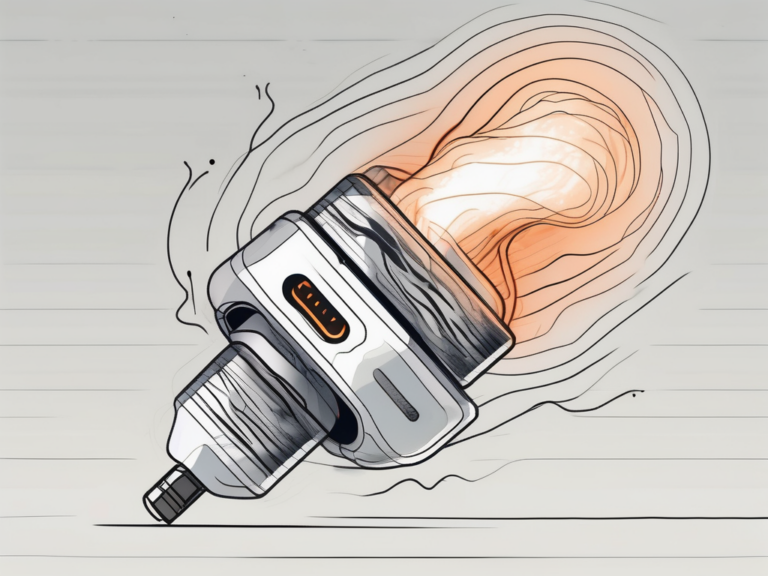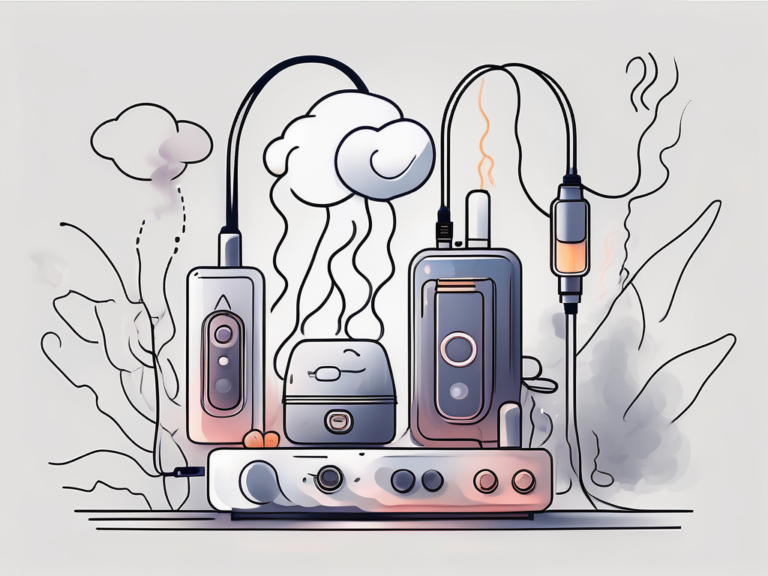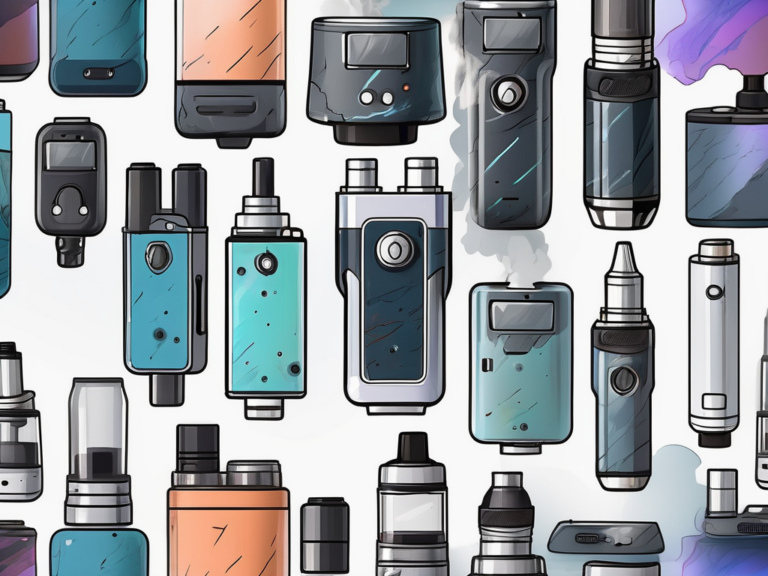why are vapes worse than cigarettes
Vaping has become increasingly popular in recent years, especially among young adults. Many people see it as a trendy and modern alternative to smoking cigarettes. However, there are several reasons why vapes are actually worse for your health than traditional cigarettes. In this article, we will explore the basics of vaping, the rise of its popularity, the dangers it poses to our health, and the misconception around it being a “safer” alternative to smoking.
Understanding the Basics of Vaping
What is Vaping?
Before we delve into the dangers of vaping, it’s important to understand what it is. Vaping refers to the act of inhaling and exhaling the vapor produced by an electronic cigarette, also known as a vape or e-cigarette. Unlike traditional cigarettes, vapes work by heating a liquid that contains various chemical compounds and nicotine. This liquid, commonly referred to as e-juice or vape juice, is then turned into an aerosol that is inhaled.
Vaping has gained popularity as an alternative to smoking, with many users believing it to be a safer option. However, the long-term health effects of vaping are still not fully understood, and research is ongoing to determine its impact on respiratory health and overall well-being.
Components of a Vape
A typical vape consists of several key components. The device itself, often resembling a pen or a small box, houses a battery, a heating element called an atomizer, and a cartridge or tank to hold the e-juice. When the user inhales, the battery activates the atomizer, which heats up the e-juice and converts it into vapor. The vapor is then inhaled into the user’s lungs.
The atomizer plays a crucial role in the vaping process, as it is responsible for heating the e-juice to the point of vaporization. It is essential for producing the flavorful clouds that many vapers enjoy. Additionally, the cartridge or tank where the e-juice is stored comes in a variety of sizes and designs, allowing users to customize their vaping experience based on their preferences.
The Rise of Vaping
Popularity Among Young Adults
One of the reasons vaping has gained such widespread popularity, especially among young adults, is the misconception that it is a safer alternative to smoking. Vapes are often marketed as fashionable accessories and come in a variety of appealing flavors, which has contributed to their appeal among the younger demographic. Additionally, many people believe that vaping produces less harmful smoke than traditional cigarettes.
Moreover, the ease of access to vaping products, both in physical stores and online, has made it convenient for young adults to experiment with different devices and e-liquid flavors. The social aspect of vaping, with vape shops becoming trendy hangout spots, has also played a role in its increasing popularity among this age group.
Marketing Tactics of Vape Companies
Another factor contributing to the rise of vaping is the aggressive marketing by vape companies. They often target young adults through social media platforms and depict vaping as glamorous and cool. However, these marketing efforts fail to address the potential health risks of vaping and may even downplay them.
Furthermore, vape companies frequently sponsor events and music festivals popular among young adults, normalizing the use of their products in social settings. The use of influencers and celebrities promoting vaping on various online platforms has also influenced the perception of vaping as a trendy and socially acceptable behavior among the youth.
Comparing Vapes and Cigarettes
The Composition of Vape Smoke vs. Cigarette Smoke
While it is true that vaping produces less smoke than smoking cigarettes, the composition of the smoke is of great concern. Vape aerosol contains harmful chemicals such as nicotine, formaldehyde, and heavy metals like lead and cadmium. Although the levels of these substances may be lower than in cigarette smoke, they still pose a significant health risk.
It is important to note that the long-term effects of inhaling these chemicals are still being studied, and the full extent of the health implications may not yet be fully understood. The heating of vape liquids to create aerosol can also lead to the formation of new compounds that could potentially be harmful to the respiratory system over time.
Immediate Health Effects of Both
When it comes to the immediate health effects, both vaping and smoking have their pitfalls. Smoking cigarettes is known to cause lung damage, heart problems, and increased risk of cancer. Vaping, on the other hand, can lead to lung inflammation, increased heart rate, and worsened respiratory symptoms. Additionally, both forms of smoking can result in addiction due to the presence of nicotine.
Furthermore, the act of smoking itself, whether it be through traditional cigarettes or e-cigarettes, can have negative impacts on oral health. The heat and chemicals from smoking can contribute to gum disease, tooth decay, and even tooth loss over time. It is essential for individuals who smoke or vape to be aware of these potential oral health risks and to maintain good oral hygiene practices to mitigate them.
The Hidden Dangers of Vaping
Long-Term Health Risks
One of the most concerning aspects of vaping is the potential long-term health risks associated with it. While studies are still ongoing, early findings suggest that vaping may increase the risk of developing respiratory diseases, such as chronic bronchitis and asthma. Moreover, there is evidence linking vaping to an increased risk of cardiovascular diseases and impaired lung function.
Additionally, recent research has raised concerns about the impact of vaping on oral health. The chemicals in e-cigarette vapor can contribute to dry mouth, gum inflammation, and an increased risk of cavities. This is particularly alarming as oral health is closely linked to overall health and well-being.
The Impact on Lung Health
Vaping can have a detrimental impact on lung health. The inhalation of harmful chemicals present in vape aerosol can lead to lung tissue damage and inflammation. This can result in various respiratory problems, including coughing, wheezing, and difficulty breathing. Individuals with pre-existing lung conditions, such as asthma, are particularly vulnerable to these effects.
Furthermore, the heating elements in vaping devices can release toxic metal particles into the aerosol that users inhale. These metal particles, such as nickel, lead, and chromium, can accumulate in the lungs over time and pose serious health risks. Prolonged exposure to these metals has been linked to respiratory issues, cardiovascular problems, and even neurological disorders.
The Misconception of “Safer” Alternatives
The Myth of Vaping as a Healthy Substitute
One of the most common misconceptions about vaping is that it is a healthy substitute for smoking. While it is true that vaping eliminates the combustion process involved in smoking, it is naive to assume that it is completely harmless. The presence of chemicals and nicotine in vape aerosol still poses risks to our health, and the long-term effects are not yet fully understood.
The Role of Nicotine in Vaping and Smoking
Nicotine, the addictive substance found in both vapes and cigarettes, is a major concern. It is highly addictive and can lead to dependence. In addition to its addictive properties, nicotine also negatively impacts brain development in adolescents and young adults. It is crucial to recognize that despite the differences in delivery, the presence of nicotine in vapes makes them just as addictive as cigarettes.
Moreover, the flavorings used in e-cigarettes have raised concerns as well. These flavorings, while they may seem harmless and appealing, can contain harmful chemicals that are inhaled into the lungs. Some flavorings have been linked to serious lung conditions, such as popcorn lung, a condition that causes scarring in the tiny air sacs in the lungs.
It is important to note that the marketing tactics used by vape companies often target young people, leading to a rise in vaping among teenagers. The sleek designs, enticing flavors, and social media influence create a false image of vaping as a trendy and safe activity. However, the reality is far from it, with studies showing that young people who vape are more likely to transition to smoking traditional cigarettes.
In conclusion, while vaping may seem like a modern and harmless alternative to smoking cigarettes, the evidence suggests otherwise. Vapes contain harmful chemicals and pose a range of health risks, both immediate and long-term. It is important to be aware of the misconceptions surrounding vaping and to make informed choices about our health. It is always recommended to seek advice from medical professionals and to consider alternative methods for quitting smoking that have been proven to be safe and effective.






